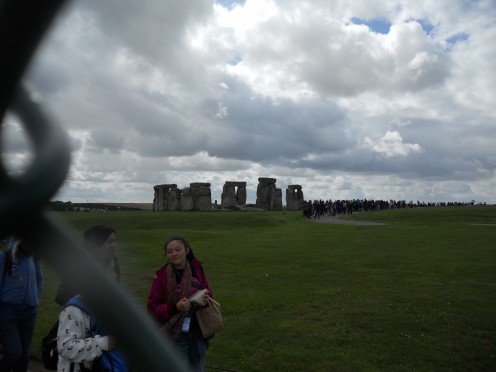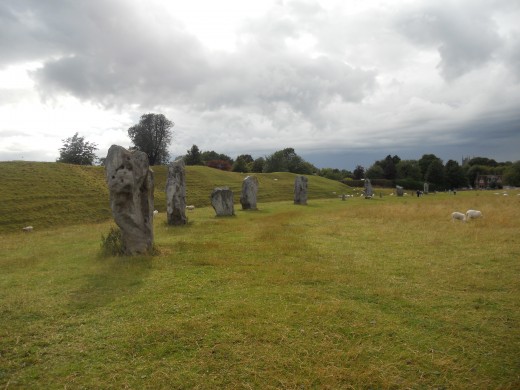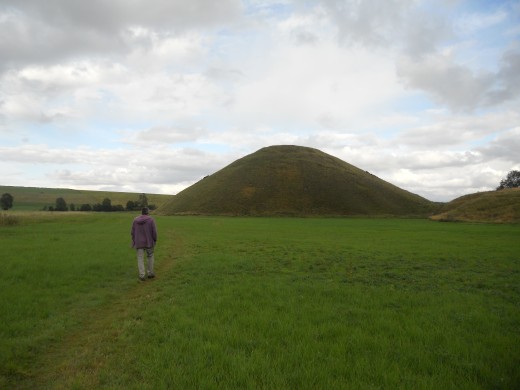- HubPages»
- Travel and Places»
- Visiting Europe»
- United Kingdom
A visitor's guide to the ancient and historic sites of Wiltshire in England
Wiltshire is a pretty county in western England that is rich in fascinating and historical sites to visit. Stonehenge, Avebury and Silbury Hill are part of a designated World Heritage Site, because of their historical importance.

Stonehenge
Probably the most famous archaeological site in Wiltshire, and indeed in England, is the stone circle of Stonehenge. Situated in central Wiltshire, near the town of Amesbury, Stonehenge draws people from all over the world to marvel at the ancient stones.
The prehistoric monument is thought to have been built around 3000-2,500 BC, and is constructed from huge slabs of bluestone that were brought all the way from Wales. The exact purpose of the circle is uncertain, but its positioning and correlation with the midsummer solstice indicates that it may have been a temple related to sun worship.
It is managed by English Heritage, who charge an entry fee to look around, although it can be viewed from a distance through the perimeter fence.
Avebury stone circle
The stone circle at Avebury is, arguably, more impressive than Stonehenge, being the largest stone circle in the world. It emcompasses part of the village of Avebury, and is intersected by the road. The large standing stones form an impressive sight, and the village itself is a very pretty and tranquil place to visit.

Silbury Hill and West Kennet Longbarrow
I have included these two sites together as they are right next to each other. Silbury Hill is a large man-made chalk hill that can be seen for miles around, standing at 121 feet (37 metres) high. It is thought to have been built around 4750 years ago, and despite excavations its purpose is still much debated.
West Kennet Long-barrow, just across the main road from Silbury Hill, is a neolithic burial mound that was probably built about 1000 years earlier. It has been excavated, and you can walk inside the large chambered tomb. Evidence of many bodies were found within, and it is one of the largest known burial sites of its type.

The White Horses of Wiltshire
Dotted around the county's hillsides you will find a number of white horses - large carved reliefs cut out of the chalk hills. Wiltshire has no less than 13 of Britain's 24 white horses. These vary in age and history: the Alton Barnes white horse was made in 1812, whereas the new Pewsey white horse was made in 1937 on the site of a much older one, dating back to the late 1700s. England's oldest white horse, at Uffington, dates back to prehistoric times, but this is just over the border in Oxfordshire.
Salisbury Cathedral
Salisbury cathedral is a beautiful medieval building, boasting the tallest cathedral spire in England. Building of the cathedral started in 1220, with later additions over the following centuries. It was immortalised in John Constable's famous painting of 1823, and is also famous for housing the best original copy of the Magna Carta, dating from 1215.

Old Sarum
Old Sarum is an ancient Iron age hill fort that was the site of the original Salisbury. Around 2 miles north of the present Salisbury, it was also home to the old Salisbury Cathedral, built in Norman times, and there is also evidence of Iron age, Norman, Roman and Saxon settlements on the site.
The hill rises to about 1,200 feet (400 metres), and a walk around the ramparts will provide a great view of "new" Salisbury and the current cathedral spire, as well as the surrounding countryside.
Discover more about this fascinating county at:
http://www.english-heritage.org.uk/siteSearch?showTotals=true&terms=wiltshire&mode=Site
and
http://www.wiltshire-web.co.uk/index.asp
Related hubs by this author:
Top ten places to visit in Dorset, England by Imogen French








